Hat


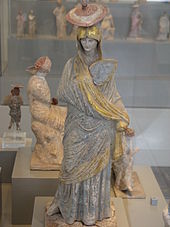
A hat is a head covering used for several reasons. It may be worn for protection against the elements, for ceremonial or religious reasons, for safety, or as a fashion accessory.[1] In the past, hats were an indicator of social status.[2] In the military, they may denote nationality, branch of service, rank and/or regiment.[3]
History
One of the first pictorial depictions of a hat appears in a Thebes tomb painting which shows a man wearing a coolie-style straw hat. Other early hats were the Pileus, a simple skull cap; the Phrygian cap, worn by freed slaves in Greece and Rome; and the Greek Pestasos, the first known hat with a brim. Women wore veils, kerchiefs, hoods, caps and wimples. Structured hats for women similar to those of male courtiers began to be worn in the late 16th century.[4] The term ‘milliner’ comes from the Italian city of Milan, where the best quality hats were made in the 18th century. Millinery was traditionally a woman’s occupation, with the milliner not only creating hats and bonnets but also choosing lace, trimmings and accessories to complete an outfit.[5]
In the first half of the 19th century, women wore bonnets that gradually became larger, decorated with ribbons, flowers, feathers and gauze trims. By the end of the century, many other styles were introduced, among them hats with wide brims and flat crowns, the flower pot and the toque. By the middle of the 1920s, when women began to cut their hair short, they chose hats that hugged the head like a helmet.[6]
Hat design

A hat consists of four main parts:[7]
- Crown, the portion of a hat covering the top of the head
- Peak (British English), visor (American English), or bill, a stiff projection at the front, to shade or shield the eyes from sun and rain
- Brim, an optional projection of stiff material from the bottom of the hat's crown horizontally all around the circumference of the hat
- Puggaree/riband (British) or hatband (American), a ribbon or band that runs around the bottom of the crown above the brim.[8][9]
- Sweatband, the strip of leather (or sometimes ribbon or other material) attached to the inner circumference of the hat to stop sweat from soiling the main body of the hat and may be adjustable with a cord or rope on certain hats
- Lining, for some hats there is a silk lining, often bearing the makers name and label
Famous hatmakers
One of the most famous London hatters is James Lock & Co of St James's Street.[10] Another was Sharp & Davis of 6 Fish Street Hill.[11] John B. Stetson is a well-known American hat company.[citation needed] In the late 20th century museums credited London-based David Shilling with reinventing hats worldwide. Notable Belgian hat designers are Elvis Pompilio and Fabienne Delvigne, whose hats are worn by European royals.[12] St. Clement, the patron saint of felt hatmakers, is said to have discoverd wool felt when he filled his sandals with flax fibers to protect his feet.[13]
Hat styles
| Image | Name | Description | |
|---|---|---|---|

|
Akubra | Australian felt hat with a wide brim. | |

|
Balaclava | A form of headgear covering the whole head, exposing only the face or upper part of it, and sometimes only the eyes. Also known as a ski mask. | |
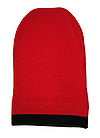
|
Barretina | A traditional style, in red it is now used as a symbol of Catalan identity. It is worn with the top flopping down. | |

|
Baseball cap | A type of soft cap with a long, stiffened and curved peak. | |

|
Beanie | A brimless cap with a small visor once popular among school boys. | |
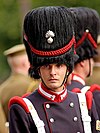
|
Bearskin | The tall, furry, full dress uniform hat of the Brigade of Guards designed to protect the footguards against sword-cuts, commonly seen at Buckingham Palace. | |

|
Balmoral bonnet | Traditional Scottish bonnet or cap worn with Scottish Highland dress. | |

|
Beaver hat | Hats made of felted beaver fur. | |

|
Beret | Soft round cap, usually of wool felt, with a flat crown, worn by both men and women and traditionally associated with France. Also used in the military. | |

|
Bicorne | Military hat with upturned corners, also known as a cocked hat. | |

|
Biretta | A square cap with three or four ridges or peaks worn by Roman Catholic clergy and some Anglican and Lutheran clergy. | |

|
Boater | Flat-brimmed and flat-topped straw hat, formerly worn by seamen, and now mostly at summer regattas or garden parties, often with a ribbon in club or college colors. | |

|
Boonie hat | A soft cotton wide-brim hat commonly used by militaries. Similar to a bucket hat. | |

|
Boss of the plains | A lightweight all-weather hat designed by John B. Stetson for the demands of the American west. | |

|
Bowler / Derby | A hard felt hat with a rounded crown created in 1850 by Lock's of St James's, the hatters to Thomas Coke, 2nd Earl of Leicester, for his servants. Sometimes known as a derby hat. | |
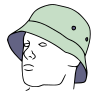
|
Bucket hat | A soft cotton hat with a wide, downwards-sloping brim. | |

|
Busby | A small fur military hat. | |

|
Capotain | A hat worn from the 1590s through the 1640s in England and Northwestern Europe. It is also commonly called a Pilgrim hat. | |
| File:Zitoune cyclisme.JPG | Casquette | A small-peaked cap often worn by cyclists. | |
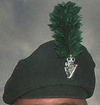
|
Caubeen | A British military headdress. | |

|
Chullo | Peruvian or Bolivian hat with ear-flaps made from vicuña, alpaca, llama or sheep's wool.[14] | |
| Chupalla | Straw hat made in Chile. | ||
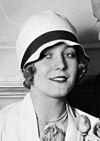
|
Cloche hat | Popular bell-shaped ladies hat of the 1920s. | |

|
Cordobés | Flat-brimmed and flat-topped traditional hat originating from Córdoba, Spain, associated with Flamenco and popularized by characters such as the fictional Zorro. | |
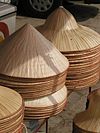
|
Conical Asian hat | Simple straw hat associated with East and Southeast Asia. | |

|
Cowboy hat | High-crowned, wide-brimmed hat, with a sweatband on the inside, and a decorative hat band on the outside. Customized by creasing the crown and rolling the brim.[15] | |
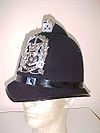
|
Custodian helmet | Police helmet worn by British constables while on foot patrol. | |

|
Deerstalker | Warm close-fitting tweed cap designed for hunting in the wet and windy Scottish climate, with brims in front and behind, and ear flaps which can be tied together either over the crown or under the chin; anachronistically associated with Sherlock Holmes. | |

|
Dunce cap | A hat that was used to punish and humiliate students in school during the late 19th and early 20th centuries. It is shaped like a cone and often has a big capital 'D' inscribed on the front. | |
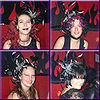
|
Fascinator | A small hat commonly made with feathers, flowers and/or beads. It attaches to the hair by a comb, headband or clip. | |

|
Fedora | A soft felt hat with a lengthwise crease. | |
| File:Fes.jpg | Fez | Red felt hat in the shape of a truncated cone. | |

|
Flat cap | A soft, round men's cap with a small brim in front. | |

|
Gatsby | A soft brimmed hat popular in New York after the turn of the century made from eight quarter panels. Also known as a newsboy cap. | |
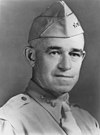
|
Garrison or Forage cap | A foldable cloth cap with straight sides and a creased or hollow crown. | |

|
Gaung Paung | Headwrap worn by the Bamar, Mon people, Rakhine and Shan peoples. | |

|
Ghutrah | Three piece ensemble consisting of a Thagiyah skull cap, Gutrah scarf, and Ogal black band. Gutrahs are plain white or checkered, denoting ethnic or national identities.[citation needed]. | |

|
Hard hat | A helmet predominantly used in workplace environments, such as construction sites, to protect the head from injury by falling objects, debris and bad weather. | |

|
Hardee hat | Also known as the 1858 Dress Hat. Regulation hat for Union soldiers during the American Civil War. | |
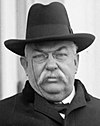
|
Homburg | A semi-formal hat with a crease and no dents. | |

|
Kepi | A French military hat with a flat, circular top and visor. | |

|
Kippah or Yarmulke | A small close-fitting skullcap worn by religious Jews. | |
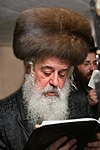
|
Kolpik | Brown fur hat worn by Hassidic Jews. | |

|
Kova tembel | Cloth hat worn by Israeli pioneers and kibbutzniks. | |

|
Montera | A crocheted hat worn by bullfighters. | |

|
Mortarboard | Flat, square hat with a tassel worn as part of academic dress. | |
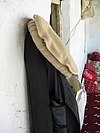
|
Pakul | Round, rolled wool hat with a flat top, associated with Afghanistan and the Mujahideen. | |
| File:PanamaHatHarryTruman.jpg | Panama | Straw hat made in Ecuador. | |
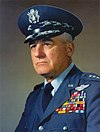
|
Peaked cap | A military style cap with a crown, band and peak (also called a visor). It is used by many militaries of the world as well as law enforcement, as well as some people in service professions who wear uniforms. | |

|
Phrygian Cap | A soft conical cap pulled forward. In sculpture, paintings and caricatures it represents freedom and the pursuit of liberty. The popular comic / cartoon characters The Smurfs, are famous for their white Phrygian caps. Their leader, Papa Smurf wears a red one. | |

|
Pith Helmet | A lightweight cloth-covered helmet made of cork or pith. | |
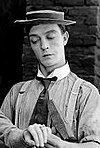
|
Porkpie | Circular, flat topped hat. | |

|
Sami hat | Also known as a "Four Winds" hat, traditional men's hat of the Sami people. | |
| Šajkača | Serbian national hat. | ||

|
Salakot | A traditional hat in the Philippines. | |
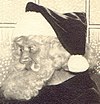
|
Santa Hat | A floppy pointed red hat trimmed in white fur traditionally associated with Christmas. | |

|
Shako | A tall cylindrical military cap, usually with a visor, badge, and plume. | |

|
Shtreimel | A fur hat worn by married Hassidic men on Shabbat and holidays. | |

|
Slouch | Generic term covering wide-brimmed felt-crowned hats like those worn by the military and ranchers. | |

|
Sombrero | A Mexican hat with a conical crown and a saucer-shaped brim, highly embroidered made of plush felt. | |

|
Student cap | A cap worn by university students in various European countries. | |

|
Tam o' Shanter | A Scottish wool hat originally worn by men. | |
| Taqiyah | A round fabric cap worn by Muslim men. | ||

|
Top hat | A tall, flat-crowned, cylindrical hat worn by men in the 19th and early 20th centuries, now worn only with morning dress or evening dress. Also known as a stovepipe hat. | |
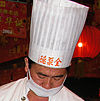
|
Toque | A tall, pleated, brimless, cylindrical hat traditionally worn by chefs. | |

|
Trilby | A soft felt men's hat with a deeply indented crown and a narrow brim often upturned at the back. | |

|
Tricorne | A soft hat with a broad brim, pinned up on either side of the head and at the back, producing a triangular shape. | |

|
Trucker hat | Similar to a baseball cap, usually with a foam brim and front section and a breathable mesh back section. | |
| File:Tudor Bonnet.JPG | Tudor bonnet | A soft round black academic cap, with a tassel hanging from a cord attached to the centre of the top of the hat. | |

|
Tuque | A knitted hat, worn in winter, usually made from wool or acrylic. Also known as a ski cap, knit hat, knit cap, sock cap, stocking cap, toboggan, watch cap, or goobalini. | |

|
Turban | A headdress consisting of a scarf-like single piece of cloth wound around either the head itself or an inner hat. | |

|
Tyrolean hat | A felt hat originating from the Alps. | |

|
Ushanka | Russian fur hat with fold down ear flaps. | |

|
Vueltiao | A Colombian hat of woven and sewn black and khaki dried palm braids with indigenous figures. | |

|
Zucchetto | Skullcap worn by clerics. |
Hat size
Hat sizes are determined by measuring the circumference of a person's head about 1/2 inch (1.3 cm) above the ears. Inches or centimeters may be used depending on the manufacturer. Felt hats can be stretched for a custom fit. Some hats, like hard hats and baseball caps, are adjustable. Cheaper hats come in standard sizes, such as small, medium, large.[16]
Traditional hat size is worked out by adding the fore and aft and side to side measurements (in inches) then dividing by two. In the UK, an equivalent hat size is an eighth of an inch smaller than in the US.
| size | Youth S/M | Youth L/XL | XXS | XS | S | M | L | XL | XXL | XXXL | ||||
|---|---|---|---|---|---|---|---|---|---|---|---|---|---|---|
| Age (years) | 0 | ½ | 1 | 1½ | 2 | |||||||||
| Circumference in cm | 34 | 43 | 47 | 48 | 49 | 50 | 51 - 52 | 53 - 54 | 55 - 56 | 57 - 58 | 59 - 60 | 61 - 62 | 63 - 64 | 65 - 66 |
| Circumference in inches | 13⅜ | 17 | 18½ | 18⅞ | 19¼ | 19¾ | 20⅛ - 20½ | 20⅞ - 21¼ | 21⅝ - 22 | 22½ - 22⅞ | 23¼ - 23⅝ | 24 - 24⅜ | 24¾ - 25¼ | 25⅝ - 26 |
| UK hat size | 5¾ | 5⅞ | 6 | 6⅛ | 6¼ - 6⅜ | 6½ - 6⅝ | 6¾ - 6⅞ | 7 - 7⅛ | 7¼ - 7⅜ | 7½ - 7⅝ | 7¾ - 7⅞ | 8 - 8⅛ | ||
| US hat size | 5⅞ | 6 | 6⅛ | 6¼ | 6⅜ - 6½ | 6⅝ - 6¾ | 6⅞ - 7 | 7⅛ - 7¼ | 7⅜ - 7½ | 7⅝ - 7¾ | 7⅞ - 8 | 8⅛ - 8¼ | ||
| French hat size | 0 | ½ | 1 | 1½ | 2 - 2½ | 3 - 3½ | 4 - 4½ | 5 - 5½ | 6 - 6½ | 7 - 7½ | 8 - 8½ | 9 - 9½ |
See also
References
- ^ The Wearing of Hats Fashion History
- ^ The social meanings of hats
- ^ Insignia:The Way You Tell Who's Who in the Military
- ^ Hat history
- ^ Vintage fashion guild
- ^ Hat history
- ^ David Morgan: Hat Care
- ^ Puggaree, the hat band, it's origins (sic) diggerhistory.com
- ^ Puggaree: Definition at lexic.us
- ^ see Whitbourn, F.: 'Mr Lock of St James's St Heinemann, 1971.
- ^ For an account of the Sharp family's hat-making business, see Knapman, D. - 'Conversation Sharp - The Biography of a London Gentleman, Richard Sharp (1759-1835), in Letters, Prose and Verse'. [Private Publication, 2004]. British Library.
- ^ Brussels life
- ^ http://www.hatsandcaps.co.uk/Hat-History-Ahat_history/
- ^ Season of the chullo
- ^ Snyder, Jeffrey B. (1997) Stetson Hats and the John B. Stetson Company 1865-1970.p5 ISBN 0-7643-0211-6
- ^ "Helmet sizes".
External links
- Ladies Hats Community
- The Council of Textile & Fashion Industries of Australia
- Different Sizing Schemes
- Hats UK has a Hat Bible and other resources
- The History of Felt Hats and Hat Making
- The Specs and Design of Flag Hats
- The History of Hats from antiquity to the 20th century
- Witty, whimsical, wacky, wonderful, International Herald Tribune, Suzy Menkes
- Hat History
